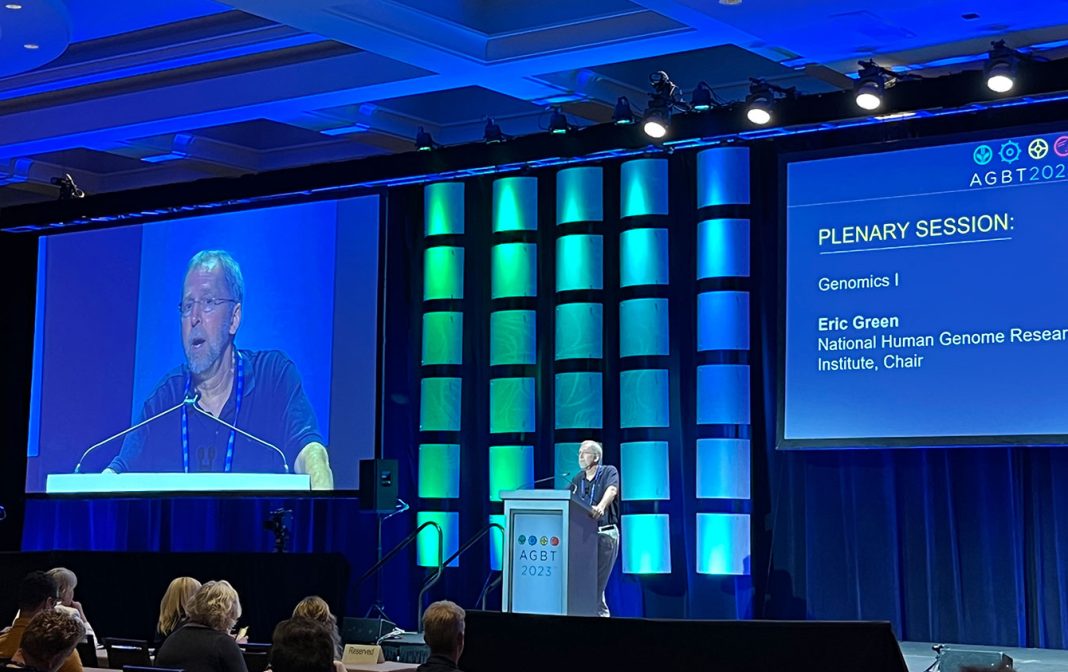The Advances in Genome Biology and Technology (AGBT) conference, held in the beach town of Hollywood, FL, last month, got its beachside groove back after a couple of landlocked years. Due to COVID-19, the conference took a break in 2021, and last year’s event was held inland, in Orlando, in the steamy month of June. But the four days spent on the coast at this year’s meeting brought back all the positive vibes that AGBT attendees have grown accustomed to: ocean views, dining al fresco, near-perfect weather, and above all, cutting-edge genomics research.
The conference was stacked with news and announcements on spatial biology, single-cell genomics, next-generation sequencing (NGS) and library prep innovations, and the construction of more-complete genomes and pangenomes.
Last year’s AGBT had been chock full of new NGS instrument releases and even new company launches. This year, smaller updates and iterative improvements filled the NGS news stream. The NGS companies in attendance seemed to be sending the same message: We are delivering on the promises we made last year.
Walking the walk
Illumina’s biggest splash was the news that the NovaSeq X, the instrument announced last fall at the Illumina Genomics Forum, was shipped to the company’s first customer, the Broad Institute of MIT and Harvard—a surprise to no one. Illumina also announced, with a much smaller splash, its long-anticipated long-read technology, Complete Long Reads, which relies on comparing “landmarks” on an original, long, single-molecule fragment to unmarked short reads.
Element Biosciences’ messages were hard to miss, as they were emblazoned on its team’s T-shirts. First, Element’s instrument, the AVITI, when coupled with the company’s novel pricing structure (which includes a subscription-like model for reagents), now offers a whole human genome sequence for as little as $200. Second, now that the AVITI is shipping, there is no lag time for manufacturing. Third, Element’s new cloudbreak chemistry, which uses new enzymes, has shortened the AVITI’s run time. And fourth, in a sponsored talk given by co-founder Matt Kellinger, PhD, the company did not shy away from making direct comparisons between the AVITI system and other platforms on the market—most notably, Illumina’s. In fact, Kellinger very candidly set the two side by side.
The other San Diego–based newcomer, Singular Genomics, was a bit more reserved, letting the advantages of its technology speak for itself. The company announced a new flow cell (the F3) for its G4 sequencing platform and a new kit (Max Read Kits) that will enable single-cell genomics.
Ultima Genomics, the latest entrant to the field, was even more reserved. (Indeed, the company was hard to find.) Last year, Ultima had a suite that was constantly packed. Curious onlookers swarmed an enormous instrument (UG-100) in the middle of the room to learn about the new technology. This year, there was no instrument, no suite, no onlookers. CEO Gilad Almogy, PhD, told GEN that Ultima is focused on its existing customers of the early-access plan.
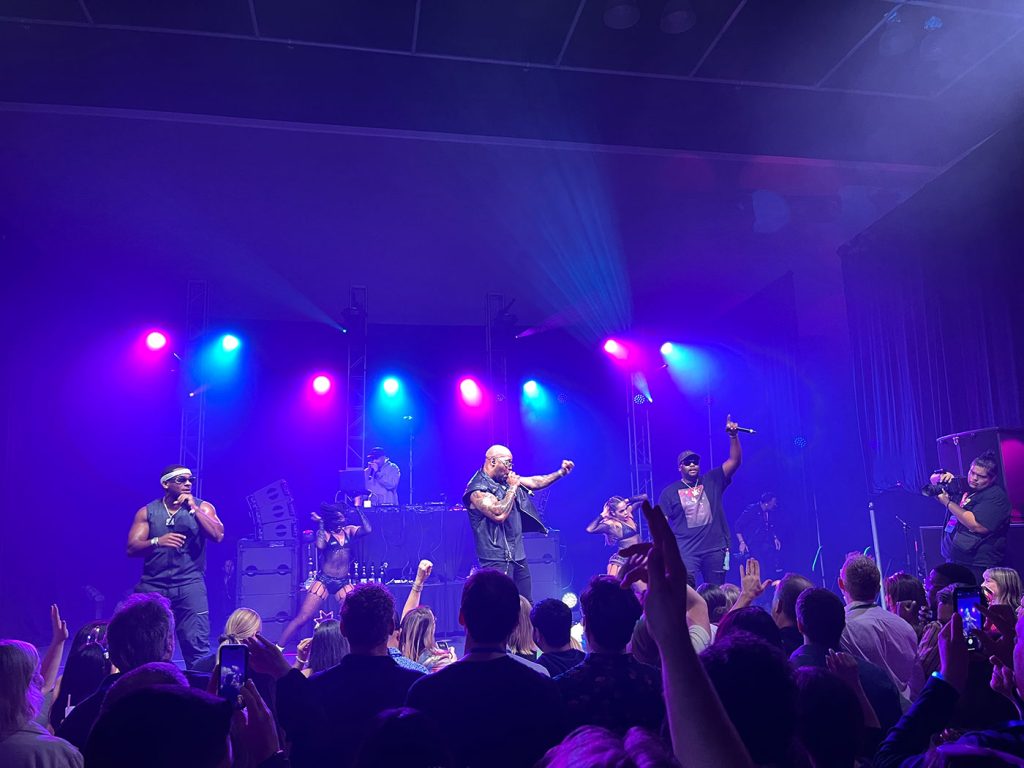
Pacific Biosciences (PacBio) was not so reserved. From team-wide uniforms that included pink Converse shoes and tie-dyed T-shirts, to a full-blown evening concert by rapper Flo Rida, PacBio seems to be having one big party. Like Illumina, PacBio had an announcement about an instrument it introduced. In PacBio’s case, the instrument is the Revio. It started shipping the week of this year’s AGBT. Users will have to wait longer for PacBio’s short-read platform, the Onso, which will begin shipping later this year. Jonas Korlach, PhD, PacBio’s co-founder and CSO, stressed the importance of the company’s long-read technology in transcriptomics. He told GEN that that “short-read RNA-seq is completely inadequate to resolve the complexity of the transcriptome.”
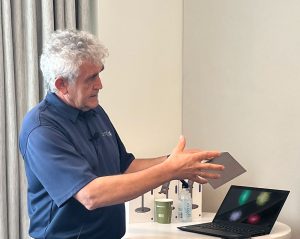
The one exception to small NGS announcements was Complete Genomics, which launched a pair of new instruments at AGBT—just weeks after making waves at the J.P. Morgan Healthcare Conference with the news that its fleet of instruments is now available in the United States. One of the two machines launched at AGBT is the most high-throughput sequencing instrument in existence—the DNBSEQ-T20—which Complete says offers a whole human genome sequence for less than $100. On the other side of the spectrum is the DNBSEQ-G99, an ultra-high-speed gene sequencer offering mid- to low-range throughput that runs in 12 hours.
Women at the center
On Tuesday evening, as the various parties in the suites were getting started, four women were honored with the inaugural Women Changing Science awards, high up on the 32nd floor of the event’s venue, the Diplomat Beach Resort Hollywood. Presented by the Rosalind Franklin Society, in conjunction with Rosalind (formerly OnRamp Bio), the honorees were Aruna Ayer, PhD, senior director, Single Cell Multiomics R&D at BD Biosciences; Julia Kennedy-Darling, PhD, vice president of innovation at Akoya Biosciences; Pardis Sabeti, PhD, an institute member at the Broad Institute and an HHMI investigator; and Yan Zhang, PhD, CEO of Mission Bio. It was a beautiful celebration of well-deserving women in genomics.
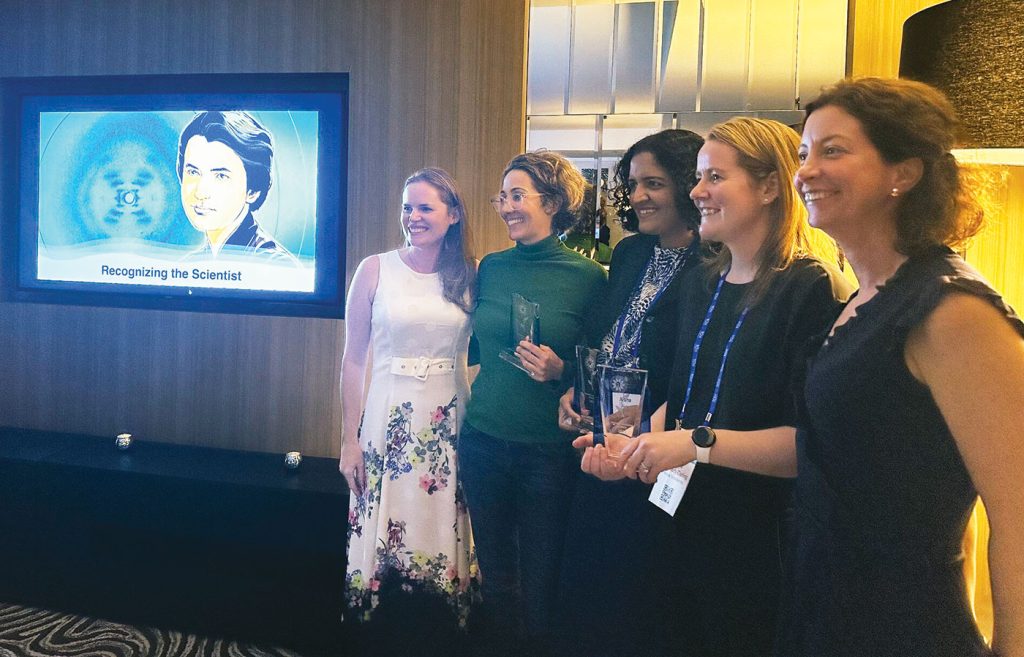
Spatial: Plex vs. resolution
There were fewer spatial companies at AGBT than last year, but the fervor over the technology was undiminished. The opening session of the conference included a talk by Chris Mason, PhD, professor of physiology and biophysics at Weill Cornell Medical School about a project to create a Spatial Atlas of Human Anatomy (SAHA)—in collaboration with NanoString Technologies—with maps of 30 organs from a healthy and genetically diverse population of adults.
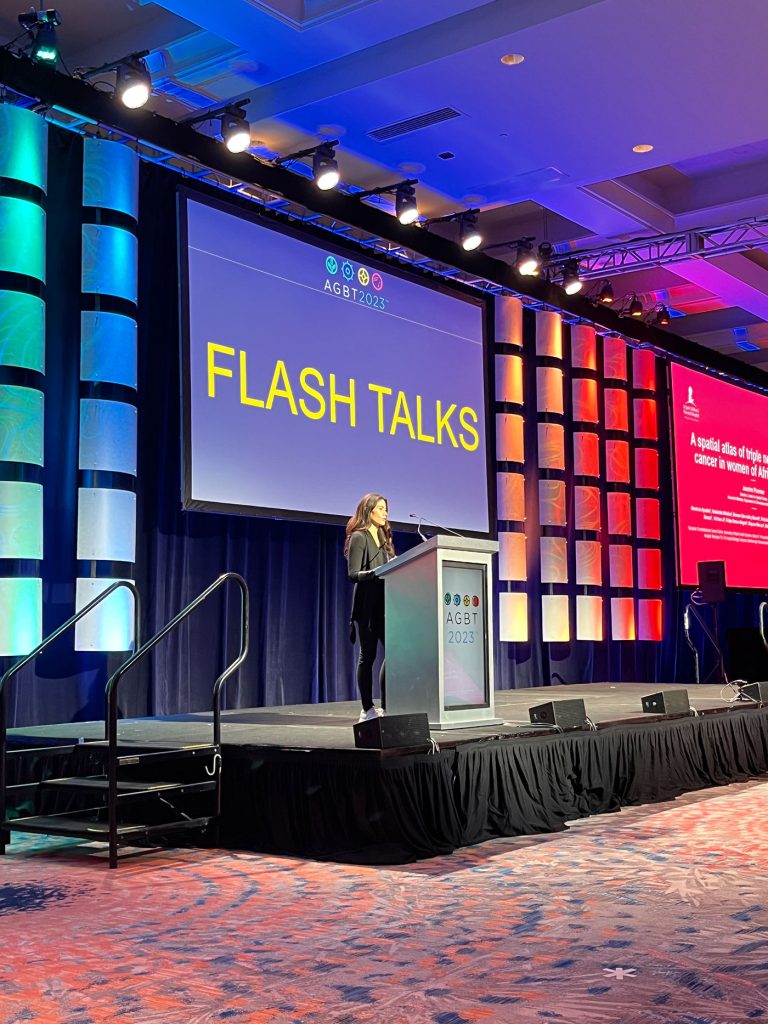
NanoString Technologies (AGBT’s gold sponsor) is putting its money on plex—how many transcripts its instrument can measure. The company’s big news was that one of its two spatial instruments, the CosMx, will be capable of 6,000-plex assays in 2024.
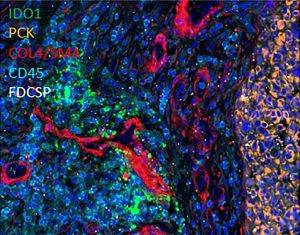
Akoya Biosciences is looking at spatial from a different angle. The company’s platform is much lower plex—100 proteins. When asked if that is sufficient, Niro Ramachandran, PhD, chief business officer for Akoya, assured GEN that it is “plenty.” Ramachandran said Akoya is happy to let the other companies work on increasing their plex because, he explained, higher plex comes with tradeoffs of time and data. Akoya hopes that researchers that have done their high-plex discovery will use the company’s instrument to uncover new biology through more-targeted questions.
Known for its spatial protein system, Akoya is moving into RNA. The first iteration of this is the incorporation of 12 RNA transcripts from the RNA-scope platform from Advanced Cell Diagnostics (ACD). In the second half of the year, the company indicated, customers will be able to run 50–100 targets.
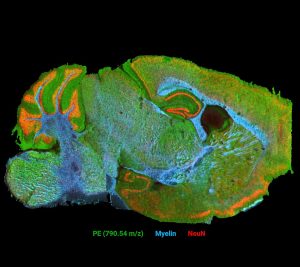
Although “multi-omics” is a buzzword, many spatial companies like Akoya are working on “di-omics”: RNA and protein. An exception is Bruker, which had its mass spectrometry team at the conference show off the company’s MALDI HiPLEX-IHC Imaging system. It can visualize small molecules, lipids, glycans, proteins, and more from the same tissue section.
The German company Resolve Biosciences had a lower profile this year, having been the top sponsor in 2022. The firm announced a different approach for spatial biology researchers. It involves a service called Meridian, which processes customers’ slides on the company’s molecular cartography instrument, allowing researchers to run spatial experiments without having to use their own equipment.
10X Genomics’ Xenium has started shipping, with Yutaka Suzuki, PhD, from the Laboratory of Systems Genomics at the University of Tokyo being the first to report data. 10X also launched the Xenium Catalyst Program, where customers can send samples in. The company also teased progress on the highly anticipated Visium HD—a higher resolution version of the firm’s widely used, slide-based Visium Spatial Gene Expression platform.
Vizgen announced that last year that it had installed 70 platforms, each of which can analyze up to 500 transcripts, with plans to reach 1,000 this year. Vizgen’s hallmark is customization—a researcher can design a fully individualized panel. That said, the company will also be launching two premade panels this year, one in neurology and one in oncology.
A newcomer to the spatial world, Pixelgen Technologies, appeared at AGBT for the first time. The company is introducing a new approach to spatial proteomics called molecular pixelation. Founded by Simon Fredriksson, PhD, CEO (and former co-founder, CEO, and CSO of the proteomics company Olink), the Stockholm-based company makes a kit that, using antibodies bound with DNA tags, creates a DNA inference mesh that can inform how proteins co-locate toward one another. This technology is uniquely situated to studying immunology because the location of the outer surface proteins of immune cells is fundamentally important for understanding their biology.
Just a kit
With big, expensive instruments getting so much attention, the front and back ends tend to stay out of the limelight. But multiple companies, such as New England Biolabs (NEB), Watchmaker Genomics, and Roche were talking about innovations in library prep such as new enzymes, RNA library prep, and nucleic acid library prep for formalin-fixed, paraffin-embedded samples. As Andrew Barry from NEB told me, “Sample prep—that’s where the fun stuff happens.”
Some companies are choosing to democratize sequencing technology by offering just a kit, rather than a large, expensive platform. 10X Genomics’ Visium is one such example. Also, the Seeker was launched by Curio Bioscience the week of AGBT (although the company were not present at the meeting). Seeker is a slide-based kit based on the Slide-Seq spatial technology developed at the Broad in 2019.
In the single-cell space, Parse Biosciences offers sc-RNA seq kits developed from the technique known as Split Pool Ligation-based Transcriptome sequencing (SPLiT-seq). At AGBT, the company announced the availability of two kits that allow more targeted scRNA-seq: a TCR kit for immune profiling applications and a Gene Capture kit, which allows more samples to be analyzed with less sequencing.
Whether attendees found themselves hearing about kits, instruments, flow cells, or price drops, or dancing at a Flo Rida concert, AGBT 2023 was one for the books. And lessons from the event should inspire the genomics community throughout the year. I cannot wait to see what will happen at AGBT 2024.

